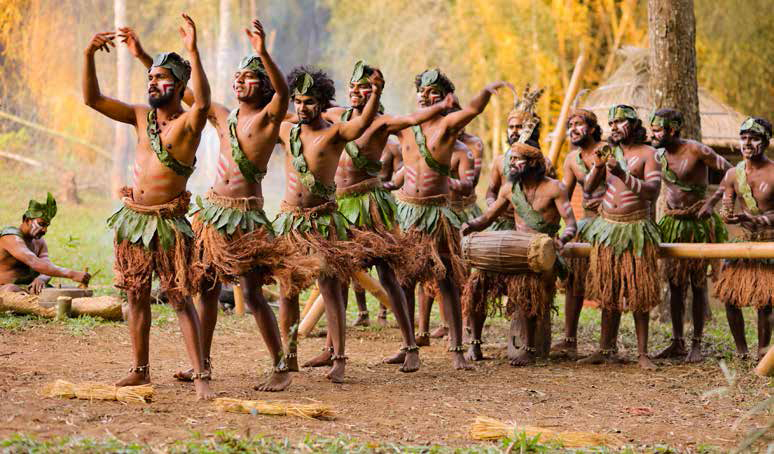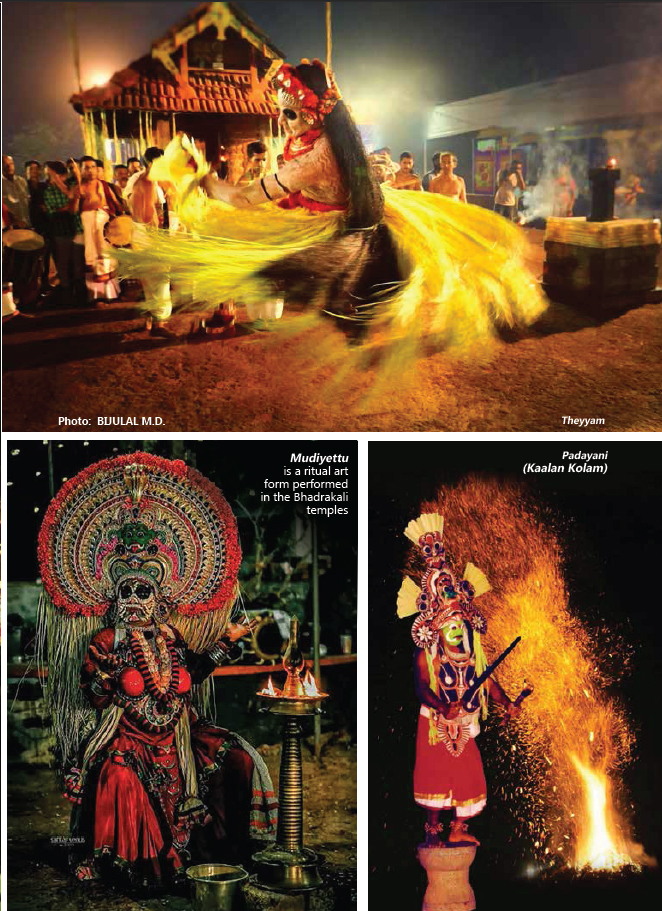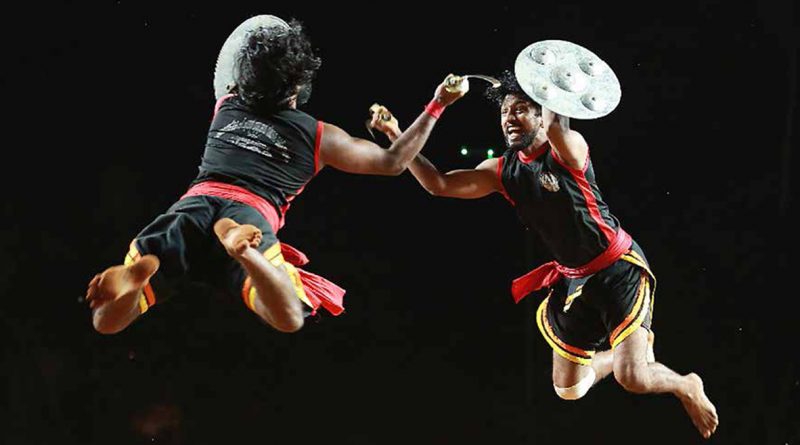Discovering Kerala’s Hidden Charms
-O.S. Unnikrishnan
Chairman,
Kerala Folklore Academy
Kerala folklore encompasses a vast array of art forms, rituals, legends, and oral narratives that provide insight into the lives and values of its people. These cultural treasures have not only captivated the locals but also attracted tourists from all around the world,contributing to the rise of folk tourism in the region.
Art Forms and Rituals
Kerala’s folklore is a delightful tapestry woven from various art forms and rituals. Kathakali, a classical dance-drama that originated in the 17th century, is one of the most famous examples of Kerala’s traditional performing arts. With its elaborate makeup, ornate costumes, and intricate movements, Kathakali narrates stories from Hindu epics such as the Ramayana and the Mahabharata. Another captivating art form is Theyyam, a ritualistic dance form primarily practiced in North Malabar. Theyyam performers, known as “Theeyattam,” embody divine spirits during performances, making it a unique and spiritually significant experience for both participants and spectators.
Legends and Oral Narratives
The oral tradition is an integral part of Kerala’s folklore. Numerous myths and legends are still shared by word of mouth, enriching the cultural fabric of the state. Stories of ancient warriors, mythical creatures, and heroic feats continue to captivate the imagination of listeners. One such fascinating legend is the “Legend of Onam,” which commemorates the mythical king Mahabali’s annual visit to his beloved kingdom. This enchanting tale is celebrated through the vibrant festival of Onam, where locals engage in traditional dance, boat races, and feasting The cultural wealth of Kerala’s folklore has not gone unnoticed by tourists seeking an authentic experience. Folk tourism has gained momentum in recent years as travellers look beyond conventional attractions and seek immersive encounters with local customs and traditions. This form of tourism not only supports local communities but also helps preserve and promote Kerala’s unique heritage.
Experiencing Art Forms
One of the highlights of folk tourism in Kerala is witnessing live performances of traditional art forms. Kathakali and Theyyam are two prominent examples that draw visitors from across the globe. Tourists can marvel at the elaborate makeup and costumes of Kathakali dancers or witness the fervent devotion of Theyyam performers as they invoke divine spirits. Additionally, many cultural centers and art academies across the state offer workshops where tourists can learn the basics of traditional art forms like Mohiniyattam, Kalaripayattu (martial arts), and traditional music.
Folklore Festivals
Kerala’s vibrant festivals provide an excellent opportunity for tourists to immerse themselves in the state’s folklore. The Thrissur Pooram, a grand temple festival in Thrissur, showcases a stunning procession of caparisoned elephants, traditional percussion ensembles, and breathtaking fireworks. The Aranmula Boat Race is another popular festival where tourists can witness the thrilling boat race on the Pamba River, accompanied by traditional folk music.
Preserving Kerala’s Folklore – A Shared Responsibility
As folk tourism gains popularity, it also raises concerns about the preservation and authenticity of Kerala’s folklore. While increased exposure can bring financial benefits to local artists and communities, it must be balanced with responsible practices to safeguard the cultural heritage. Engaging local communities in the development and promotion of folk tourism is essential to ensure that traditions are respected and preserved. Local artists, performers, and craftspeople should be actively involved in showcasing their art forms, giving tourists an authentic and unadulterated experience.



